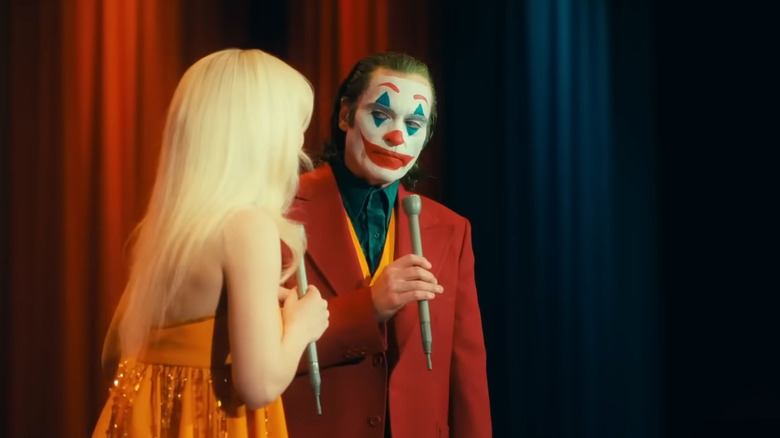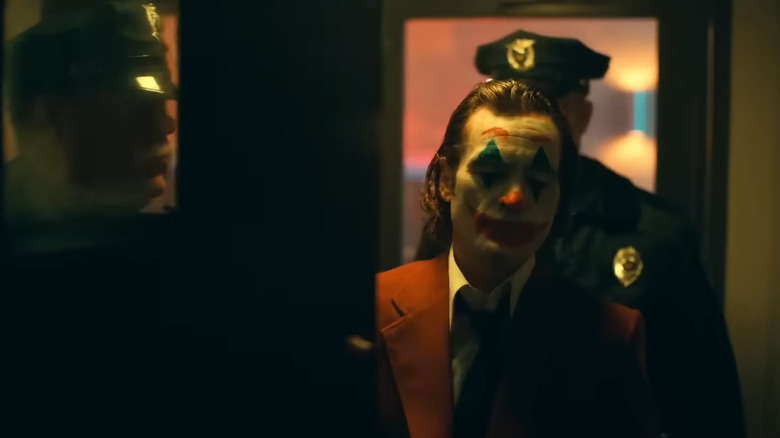Why Joaquin Phoenix's Arthur Fleck Is Not The Real Joker, According To Director Todd Phillips
This post contains spoilers for "Joker: Folie à Deux."
There are a lot of controversial elements to the long-awaited sequel to "Joker," but maybe the biggest one is the reveal that Joaquin Phoenix's Arthur Fleck isn't really the Joker we all know and love. This guy will never end up in a never-ending feud with Batman, nor will he be smashing anybody's head into a pencil. Instead, "Folie à Deux" ends with Arthur not only renouncing his Joker persona, but also getting stabbed to death for good measure. To any fan expecting this character to somehow get involved in Bruce Wayne's life, it must've been a bitter pill to swallow.
In an interview with IGN, director Todd Phillips clarified that he never really intended for Arthur Fleck to be seen as the same Joker from the comics. As he put it:
"The first film is called 'Joker.' It's not called 'The Joker,' it's called 'Joker.' And the first film under the script always said "An origin story." Never said THE origin story. It was this idea that maybe this isn't THE Joker. Maybe this is the inspiration for the Joker."
A lot of fans have called this answer a cop-out, but it is easy to see what he means. Not only is Bruce Wayne established as a child in the first movie, meaning that any battle between the two characters would have a big generation gap we're not used to seeing, but Fleck has never been a particularly competent or ambitious villain. "He's not a criminal mastermind," Phillips said. "It's one of the things we've always said about him, even in the first movie. And if we never made a sequel, it was just like, think what you want about what this guy turns into, but it's never any version of the Joker that we all grew up on. You know what I mean? That's just not who Arthur is."
Why Arthur Fleck gives up the Joker persona
Near the end of "Folie à Deux," Arthur confesses his crimes to a jury and denounces his Joker role, costing him the love of Lee (Lady Gaga). In an interview with Entertainment Weekly, Phillips explained Arthur's decision here:
"He realized that everything is so corrupt, it's never going to change, and the only way to fix it is to burn it all down. When those guards kill that kid in the [hospital] he realizes that dressing up in makeup, putting on this thing, it's not changing anything. In some ways, he's accepted the fact that he's always been Arthur Fleck; he's never been this thing that's been put upon him, this idea that Gotham people put on him, that he represents. He's an unwitting icon. This thing was placed on him, and he doesn't want to live as a fake anymore — he wants to be who he is."
It's a depressing realization for a depressing movie, made even more so by the way Arthur isn't even allowed to "be who he is" for very long before he's murdered. The guy who kills is him is a mental patient who carves a smile into Arthur's face, implying that this is the real Joker and that Arthur was simply the inspiration for the character we're all familiar with. It's a dark, poetically ironic closing note, one that firmly shuts the door on another sequel down the road.
The ending continues the original movie's argument that people like the Joker are an almost-inevitable result of a system that treats people with mental illness so poorly, not to mention a system that fails to help the struggling lower class in general. The ending of "Folie à Deux" implies that the Joker isn't really someone you could kill because unless the roots of what made Arthur into the Joker in the first place are addressed, a new Joker will always be there to take his place.
"Joker: Folie à Deux" is now playing in theaters.

